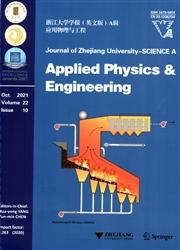燃烧瞬态驱动高速机器人流体动力学研究
IF 3.9
3区 工程技术
Q1 ENGINEERING, MULTIDISCIPLINARY
引用次数: 1
摘要
水下航行器在水下观测、海洋资源勘探和样品采集等方面发挥着重要作用。软机器人是一种独特的水下航行器,虽然其驱动和响应能力较弱,但具有良好的环境适应性和运动灵活性。瞬态驱动方法(TDM)就是为了解决这些缺点而发展起来的。然而,机器人的快速运动与流场之间的相互作用尚未得到充分的研究。在本研究中,建立了计算流体动力学模型来模拟机器人产生的瞬态高速运动扰动的流体场。针对机器人动力学对推力和偏心距的依赖性,获得机器人周围流场和湍流场的典型结构,定量分析机器人的运动学性能、速度分布、涡流系统、表面压力和湍流。结果表明,机器人头部和尾部的高速区域以及由于突然膨胀而形成的漩涡系统,表明最大流体速度与偏心率呈负相关。研究结果为研究机器人在操作加速和转向任务中的环境交互能力提供了有用的信息。目 的 水下航行器在水下观测、 海洋资源勘探和样本采集中发挥着重要作用. 软机器人是一种独特的水下机器人, 具有良好的环境适应性和运动灵活性, 但它们的驱动和响应能力较弱. 同时, 机器人的快速运动与流场之间的相互作用尚未得到充分研究. 为解决这些问题, 本文旨在开发一种计算流体动力学模型, 以模拟由机器人产生的瞬态高速运动所干扰的流场. 创新点 1. 通过流固耦合与动网格技术开发了瞬变速机器人水下运动的数模模型. 2. 基于偏心率和化学放能反应驱动过程, 建立二者与机器人水下运动表现、 压力场、 速度场和湍流结构的关系. 方 法 1. 关注机器人动力学对推力和偏心率的依赖性, 并开发基于流固耦合方法与动网格技术的计算流体力学模型. 2. 获得机器人周围湍流场的典型结构, 并定量分析速度分布、 涡流结构、 压力和湍流特性. 结 论 1. 机器人头部和尾部都会因突然加速而出现高流速区域, 且在推力较高的一侧拐角处出现湍涡; (湍.)2. 本研究揭示了最大流速与偏心率之间的关系. 3.机器人表面上的最大压力与推力呈正相关, 与偏心率呈负相关; (湍)笨笨笨笨,笨笨笨笨。本文章由计算机程序翻译,如有差异,请以英文原文为准。
Hydrodynamics of high-speed robots driven by the combustion-enabled transient driving method
Underwater vehicles play important roles in underwater observation, ocean resource exploration, and sample collection. Soft robots are a unique type of underwater vehicles due to their good environmental adaptability and motion flexibility, although they are weak in terms of actuation and response ability. The transient driving method (TDM) was developed to resolve these shortcomings. However, the interaction between the robots’ swift motions and flow fields has not yet been fully studied. In this study, a computational fluid dynamic model is developed to simulate the fluid fields disturbed by transient high-speed motions generated by the robots. Focusing on the dependence of robot dynamics on thrust force and eccentricity, typical structures of both flow and turbulence fields around the robots are obtained to quantitatively analyze robot kinematic performance, velocity distribution, vortex systems, surface pressure, and turbulence. The results demonstrate the high-speed regions at the robots’ heads and tails and the vortex systems due to sudden expansion, indicating a negative relationship between the maximum fluid velocity and eccentricity. The reported results provide useful information for studying the environmental interaction abilities of robots during operating acceleration and steering tasks. 目 的 水下航行器在水下观测、 海洋资源勘探和样本采集中发挥着重要作用. 软机器人是一种独特的水下机器人, 具有良好的环境适应性和运动灵活性, 但它们的驱动和响应能力较弱. 同时, 机器人的快速运动与流场之间的相互作用尚未得到充分研究. 为解决这些问题, 本文旨在开发一种计算流体动力学模型, 以模拟由机器人产生的瞬态高速运动所干扰的流场. 创新点 1. 通过流固耦合与动网格技术开发了瞬变速机器人水下运动的数模模型. 2. 基于偏心率和化学放能反应驱动过程, 建立二者与机器人水下运动表现、 压力场、 速度场和湍流结构的关系. 方 法 1. 关注机器人动力学对推力和偏心率的依赖性, 并开发基于流固耦合方法与动网格技术的计算流体力学模型. 2. 获得机器人周围湍流场的典型结构, 并定量分析速度分布、 涡流结构、 压力和湍流特性. 结 论 1. 机器人头部和尾部都会因突然加速而出现高流速区域, 且在推力较高的一侧拐角处出现湍涡; 机器人尾部产生的高 k (湍流动能) 区域随运动向内发展. 2. 本研究揭示了最大流速与偏心率之间的关系. 3. 机器人表面上的最大压力与推力呈正相关, 与偏心率呈负相关; 偏心率使机器人旋转, 会增强流场的扰动, 也会使头部区域的 k 和 ε (湍流耗散率) 降低.
求助全文
通过发布文献求助,成功后即可免费获取论文全文。
去求助
来源期刊

Journal of Zhejiang University-SCIENCE A
工程技术-工程:综合
CiteScore
5.60
自引率
12.50%
发文量
2964
审稿时长
2.9 months
期刊介绍:
Journal of Zhejiang University SCIENCE A covers research in Applied Physics, Mechanical and Civil Engineering, Environmental Science and Energy, Materials Science and Chemical Engineering, etc.
 求助内容:
求助内容: 应助结果提醒方式:
应助结果提醒方式:


